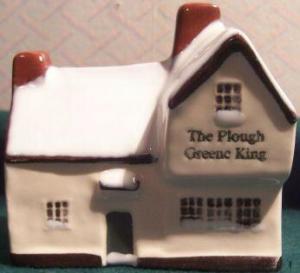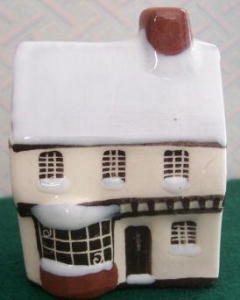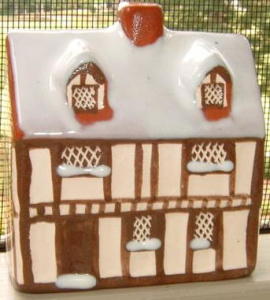COLOURS:
There were many cottages that were only produced in one colour, whilst others can be found in several. For example the shop, # 11, in it’s primary colour is white but can also be found in red, blue and green. It must be remembered however that each cottage is totally unique and no two, even of the same type or colour scheme, can be exactly the same. Sometimes variances inside the kiln or a fluctuation in the heat caused the colours to vary, so a supposedly red coloured model would turn out to be a shade more like orange or pink. It would affect the shade of the roof colour also. Opening a kiln was always an exciting moment to see the final result . This also makes collecting ‘fun’ as there are many variations of the same piece. The trick however would be knowing when to stop !!
Here is a lovely example of the colour know as “Suffolk Pink” the pink hue was achieved by adding Ox blood to the mix !
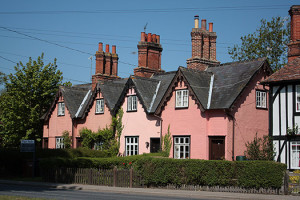
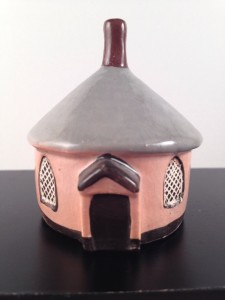
BUNTING:
These models were first produced in 1977 when England was festooned in bunting to celebrate the Silver Jubilee of Queen Elizabeth II. They were also produced later, in 1981 to celebrate the wedding of Prince Charles and Lady Diana.
Other models with bunting are the Pub #33 and Mudlen End #18 both of these are very rare and I have seen just one example of each.
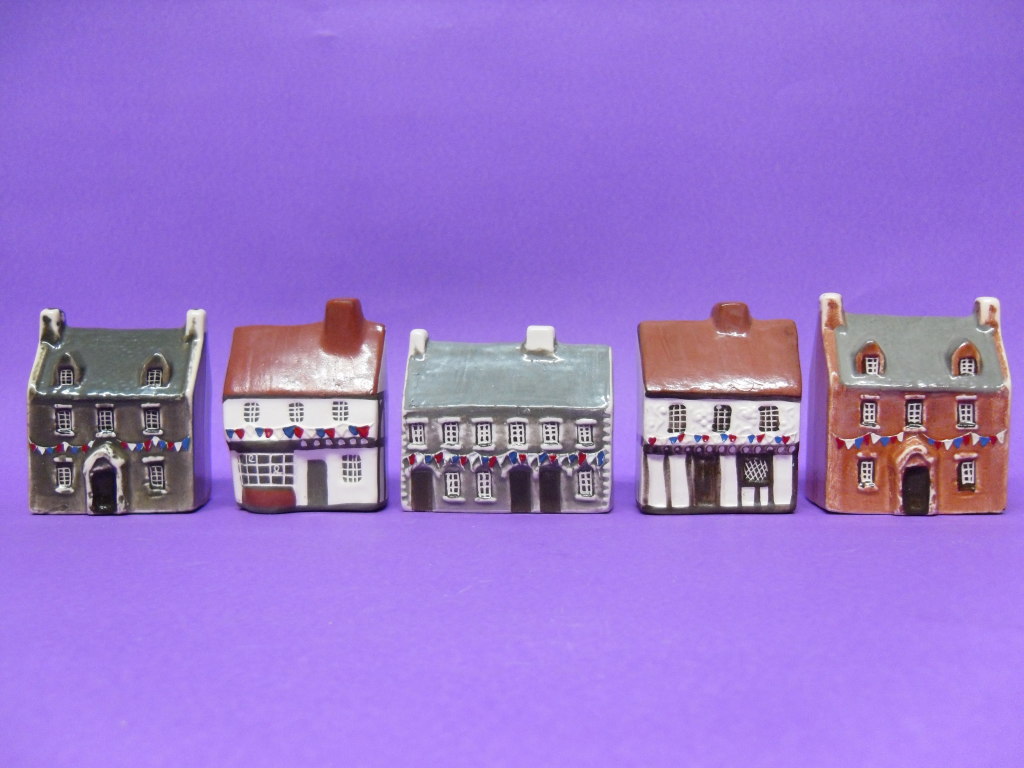
FLOWERS:
Produced in 1988 to celebrate Bury St. Edmunds winning a division of the Britain In Bloom competition. The competition is entered by the communities of towns, villages and cities, each is assessed for their achievements in three areas, Horticultural Excellence; Environmental Responsibility; and Community Participation.
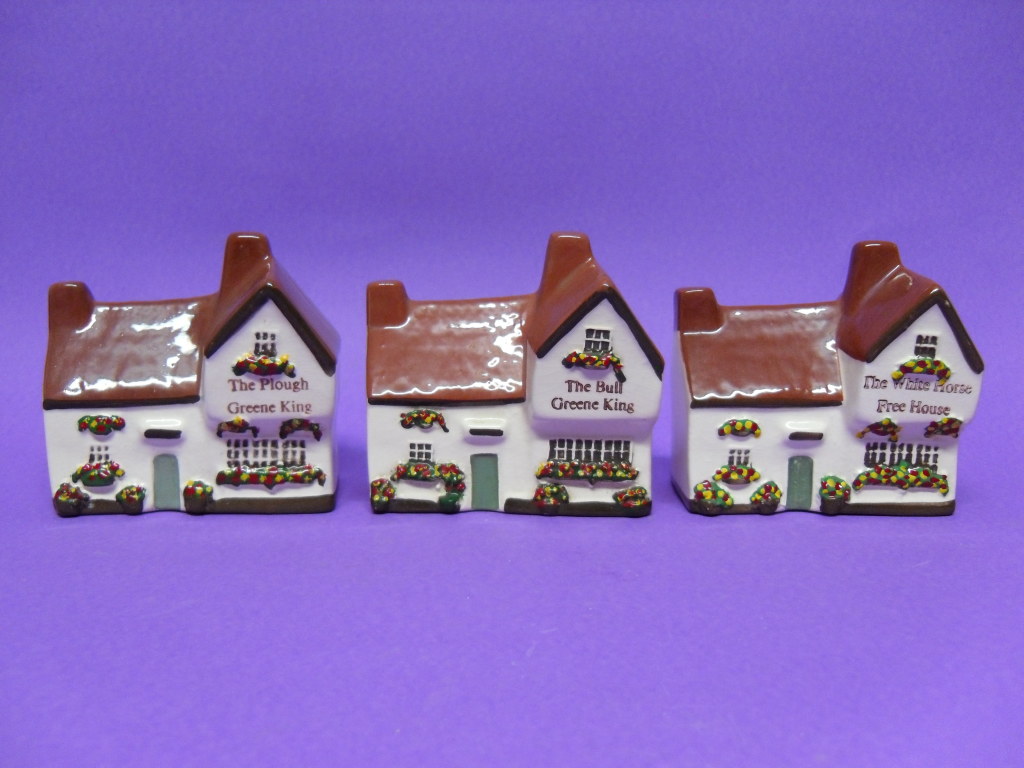
SNOW:
Some models, after the firing process , were chosen to have a decoration of snow applied to them. It was quite a challenge to create a substance that could be painted on to glaze, then re-fired to create the snow effect. However this is what James Hart was very good at, solving problems and creating solutions.
Here are just a few examples.
